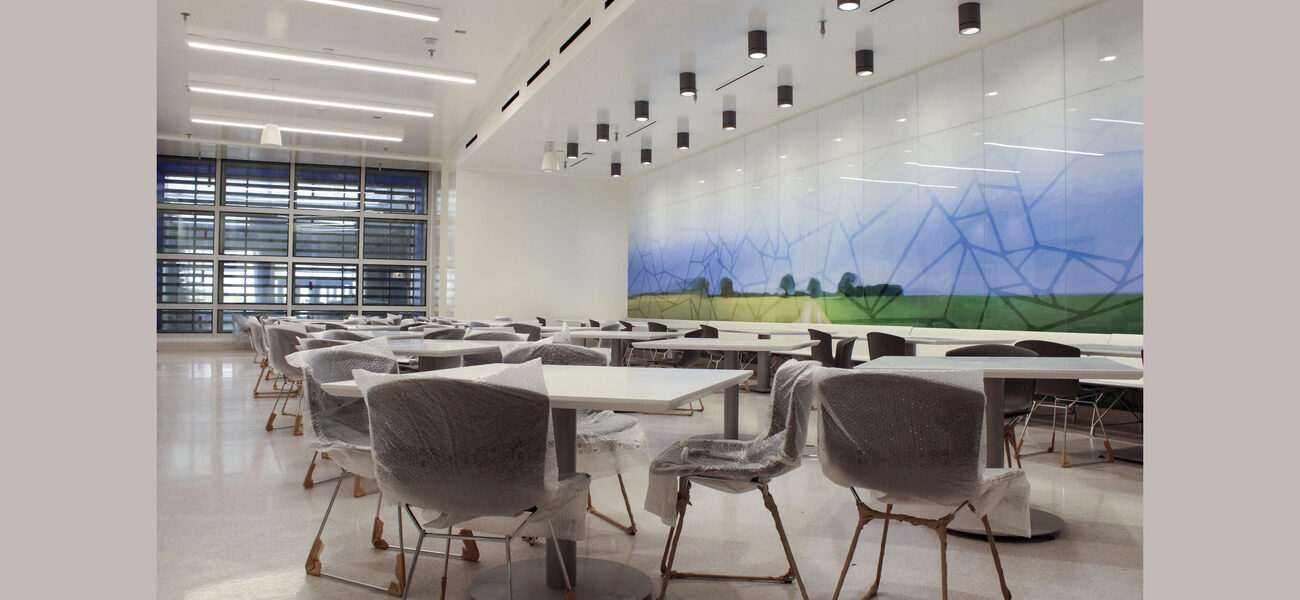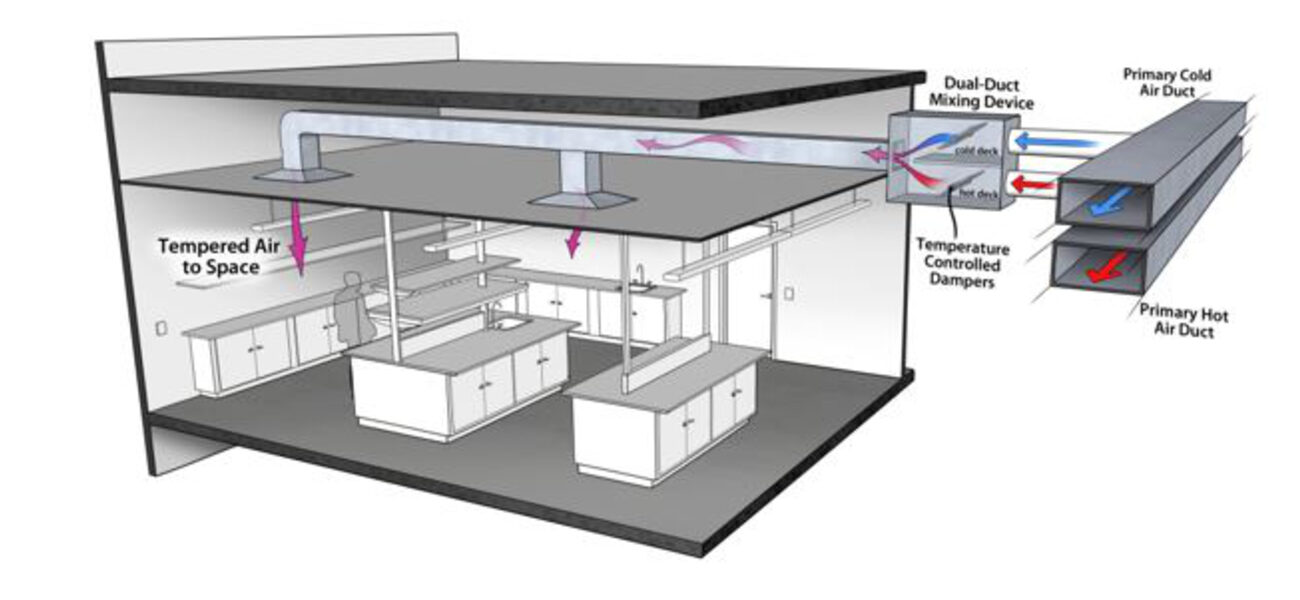Catastrophic weather events that devastate research buildings, displace personnel, and result in the loss of thousands of animals are sounding the alarm for institutions to make their facilities more resilient. The National Academies, the National Institutes of Health (NIH), and the U.S. Department of Agriculture (USDA) are calling for proactive risk assessment and designs focusing on mitigation and recovery from any threat, especially at animal facilities. They urge owners to make their facilities more resistant to disruptions caused by weather-related incidents, biological disasters, terrorism, supply chain failures, and any other potentially harmful occurrence.
“Emergency management at academic research institutions is mainly reactive instead of proactive, and planning efforts are more focused on response than on prevention, protection, mitigation, and recovery,” states the National Academies of Sciences, Engineering, and Medicine in its publication Strengthening the Disaster Resilience of the Academic Biomedical Research Community. “There is a large gap between the community’s existing level of preparedness and what the community will require to optimally recover from disasters.”
“When there’s a hazardous event, there’s a loss in the functionality of your facility and a long recovery time,” says Willa Small Kuh, planning director at Affiliated Engineers Inc. (AEI). “We want to build mitigation into the facility design so the loss of functionality is limited and the time for recovery is shortened. Animal facilities face a unique concern, as the relocation of animals is very difficult.”
Importance of Built-In Resilience
Design guidelines from the National Academies, NIH, and USDA are geared toward creating facilities that are flexible to meet different requirements, adaptable to changing uses, and resilient enough to withstand and recover from disruptions. Including shelter-in-place provisions is an example of flexibility that addresses the need to relocate animals within a facility and the ability to retain animal care staff on-site.
Being unprepared results in reduced safety for people and animals, lost research, delays for related scientific endeavors, career setbacks and loss of researchers who migrate to other institutions, lost revenue, and the negative ripple effect on the local economy.
“We have to think about the facility in an integrative way to address all aspects related to the vivarium, including the building engineering systems; waste removal; supplies such as food, bedding, and medical items; the need for staff parking, hoteling space, public transportation, and the needs of staff members who may be sheltering in place,” says Kuh. “In some locations, staff families may be invited to take shelter within the facility.”
The integrative approach must address the potential interruption of electrical, natural gas, and water services, as well as damaged roads and other infrastructure that could impede transportation to and from the site. Addressing critical issues as part of a comprehensive, proactive planning process and design implementation will alleviate harsh impacts on the people, animals, and overall operations of a facility. A resilient facility is better prepared to handle setbacks and recover quickly without long-term detriments.
Design Guidelines
The NIH includes optional guidelines for risk assessment in its Design Requirements Manual, which was updated in 2016 and is currently being further enhanced. Institutions are advised to carefully consider the recommendations based on the needs of their facility.
According to the NIH, a facility should be designed to respond in the following way during a disaster or malfunction:
- Preclude single points of failure, including those from compounding disasters and cascading failures.
- Reduce potential for loss of service.
- Minimize impact to research and facility operations.
- Promote rapid recovery in the event of a disruption.
“Consider how failures can cascade and the wide-ranging implication of such events,” says Laura Halverson, principal at AEI. “For example, a water utility failure could impact the ability to produce chilled water and operate cooling systems. The potential loss of an animal colony will not only set back research, but can also damage grant funding, the reputation of institutions and in some cases, the career of the researcher who no longer has active research.”
The NIH guidelines provide owners, architects, and engineers with sufficient details to help them understand the importance of locating utilities and major infrastructure components in safe areas, separating redundant infrastructure systems instead of locating them next to each other, providing adequate drainage, minimizing water intrusion and leakage, and having an adequate quantity of reserve supplies in a proper location. Emergency devices, maintenance devices, and critical components—such as an isolation valve to shut off a leaking water pipe—should be easily accessible.
Once the necessary guidelines are implemented, the NIH suggests the architects and engineers discuss the system design, risks, and potential mitigation measures with program administrators and the emergency preparedness and response teams.
Specific design considerations recommended by the NIH include:
- A minimum of N+1 redundancy on all major equipment is a requirement for animal facilities.
- Observe legally required and optional standby measures for electrical loads.
- Don’t locate piping distribution above critical spaces.
- Building automation system should be programmed to provide immediate alerts for system malfunctions.
The NIH also offers recommendations regarding water continuity, which AEI often finds is one of the most challenging for clients to address within preparedness plans. The NIH suggests campus water systems be on a grid with valving and bi-directional flow with a minimum of two water service connections for each facility. There should be on-site water storage, emergency water connections, and animal drinking water storage for 24 to 48 hours.
“There isn’t often a water equivalent to having that extra generator,” says Kuh. “We’re seeing some clients say they are not comfortable with the storage of 24 to 48 hours. Those located in hurricane areas are concerned about the ability to restore potable water service within that timeframe.”
While the NIH guidelines are optional, the USDA began mandating a threat, hazard, and impact risk assessment in 2022 for its regulated species. Compliance requires identifying essential personnel, describing specific procedures to respond to emergencies, completing comprehensive training, and participating in a semi-annual program review by the Institutional Animal Care and Use Committee.
Risk Management
Designing a building with resilience is a key factor in risk management and mitigation. Building owners and stakeholders should understand potential operational risks and hazards, including everything from weather and climate events to equipment failures. What is the likelihood of an incident occurring and what are the consequences of each potential disaster? The answer to that question will provide useful information about the impact an incident would have on a building, its occupants, the animals it houses, overall operations, and the ability to recover.
Halverson says AEI’s resilience design includes a discussion with clients to define their vital operations, which are primarily building services and programs, to determine the physical spaces where the most harm would be done by an adverse situation. Once the risks are identified, mitigation measures can be taken to prevent damage and change the outcome.
Resilience design is quickly evolving, but the primary objectives of protecting vital operations and adapting to avoid risks remain the same. The mitigation may require a significant move, such as relocating a facility away from a flood-prone area, but the long-term benefit will make the move worthwhile and cost-effective. It is critical to incorporate climate modeling and an analysis of future weather shifts into the design.
“The owner sets the design team’s expectations in addressing resilience and determines the extent of mitigation,” says Kuh. “Ultimately, a risk has to do with the gut feeling of the person in control about what they are willing to do.”
Resilience in Action: Case Studies
AEI points to three projects as examples of facilities where resilient design has been implemented.
University of Texas Southwestern Medical Center
Located in Dallas, the university houses animals in multiple buildings of varying ages with many constructed prior to the development of the most recent animal care standards. As the first step in modernizing the animal facilities on campus, the university’s goals were to increase the amount of barrier space, and improve the reliability, efficiency, and redundancy of the vivaria and animal care operations.
“A challenge facing clients in Dallas is the significant increase in moisture, including flooding and increasing humidity over the last 20 years,” says Halverson. “The increased outside air moisture content presented a high humidity concern within the UT Southwestern vivaria facilities, and this condition was intensified by the dual duct systems.”
With a dual duct system, cold air is delivered through one duct to provide air conditioning. The cold air is mixed with hot air to provide the needed supply air temperature to control the space needs, but the existing system did not dehumidify the hot air. This resulted in the animal facilities struggling to meet the desired humidity levels, especially on hot, rainy days. Exceeding the published guidelines raises concerns from the Association for Assessment and Accreditation of Laboratory Animal Care (AAALAC) about the overall health and wellness of the animals.
A review of the university’s animal facilities determined the best solution to meet the university goals was to renovate the third floor of Building B on the north campus (NB3). The renovation included upgraded cooling coils to improve the air handling unit operating conditions to reduce humidity, manifolding the existing air handling units together to provide operational redundancy, and increasing on-site storage of the animal drinking water. If a heating or cooling coil fails in one air handling unit, the facility is still able to operate a partial load.
The Ohio State University Pelotonia Research Center
The university wanted its new interdisciplinary research facility, which opened in May 2023, to feature a sustainable design with a resilient infrastructure. Aware of the recent increase in rain and temperature changes in Columbus, leaders wanted a building that can withstand and recover from emergencies. Instead of proceeding with the original plan to construct the facility in a 500-year floodplain near a river, the location was changed.
Even though the building was not constructed in the floodplain, the design still includes a hydrostatic slab because of concerns about the long-term changes in groundwater elevation. A hydrostatic slab is a monolithic concrete slab designed to withstand the upward lift caused by hydrostatic pressure induced by groundwater.
“Hydrostatic slabs have a depth exceeding that of a traditional slab on grade, and are selected to prevent groundwater seepage into the basement, as well as prevent slab damage that may occur due to groundwater,” notes Halverson.
Other design features include putting the air handling units in the basement adjacent to the animal facility, while locating the air intakes for the air handling units at the penthouse to prevent anyone with nefarious intentions from accessing the intakes and to keep toxins, such as diesel fumes of an idling truck, from entering the building.
Additional design elements are a stormwater management system adjacent to the site, air handling unit control strategies prioritizing holding room temperatures, on-site animal drinking water storage, and design outside air temperatures exceeding industry requirements in recognition of extreme climate events.
U.S. Department of Agriculture’s National Bio and Agro-Defense Facility (NBAF)
Containment at this Kansas-based facility cannot be breached, due to the sensitive nature of research conducted there and the inclusion of BSL-2, BSL-3, BSL-3Ag, and BSL-4 labs. The only choice in an emergency is to shelter in place. The NBAF is part of the response from the USDA and the Department of Homeland Security to protect against the threat and potential impact of serious animal diseases. [Due to the sensitive nature of this project, only information previously shared by NBAF in public communications is included.]
“Significant time and effort were spent ensuring the facility as a whole could deliver uninterrupted operation,” says Kuh. “Guidance from the nuclear industry helped achieve this stringent level of performance. The priority is protecting the people, the wildlife, and the natural environment from all the things happening inside the facility, so containment is vital.”
The risk assessment included a review of potential accidents and uncertainties; high-wind modeling; epidemiological and economic modeling of susceptible populations and outbreak control measures; review of the cumulative risks of foot-and-mouth disease release; and a study of the unique risks of large-animal, high-containment labs.
The NBAF is a structurally hardened facility providing protection in adverse weather emergencies. Critical systems include redundant safety and biocontainment features, the use of best practices in the animal and zoonotic pathogen labs, and nuclear industry structural and containment integrity applied to address high winds. The building features elevated air intakes, on-site fuel storage, and secondary electrical feed and back-up generators.
By Tracy Carbasho


